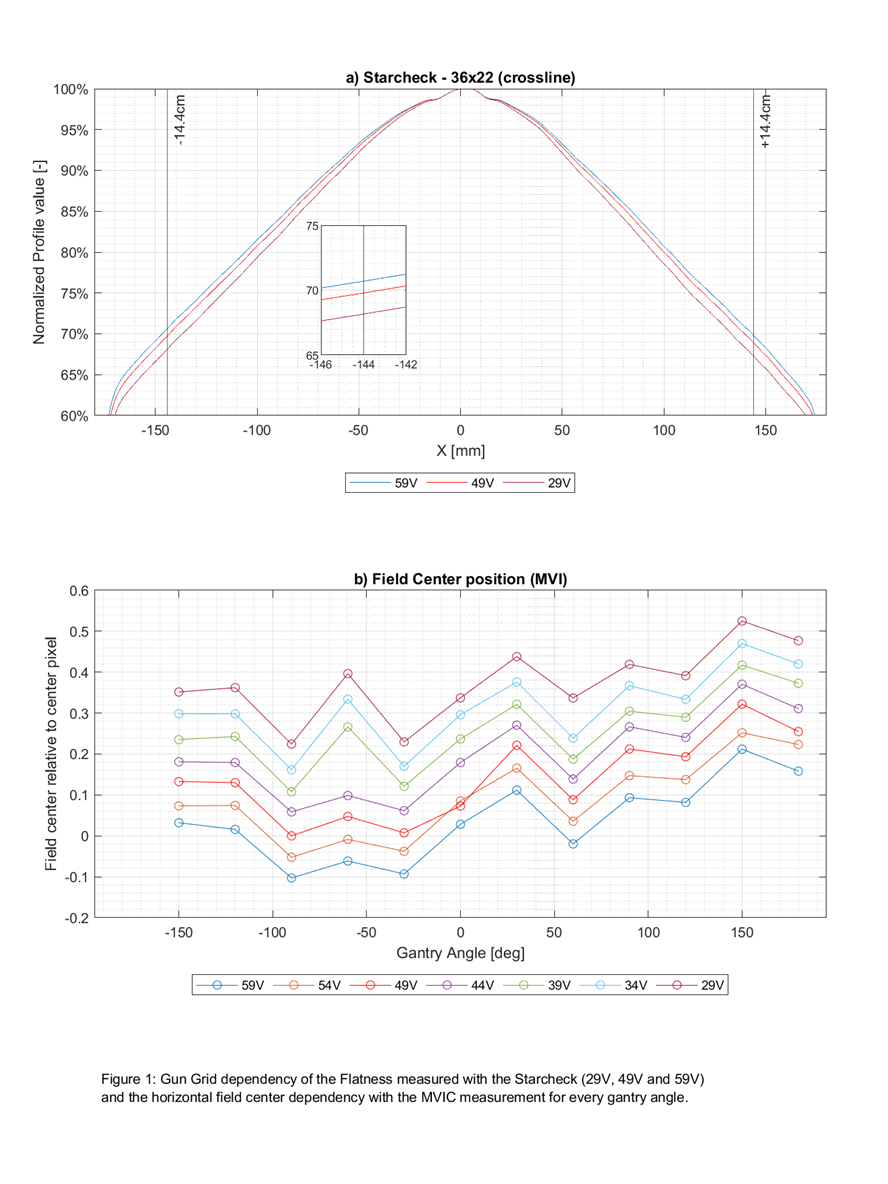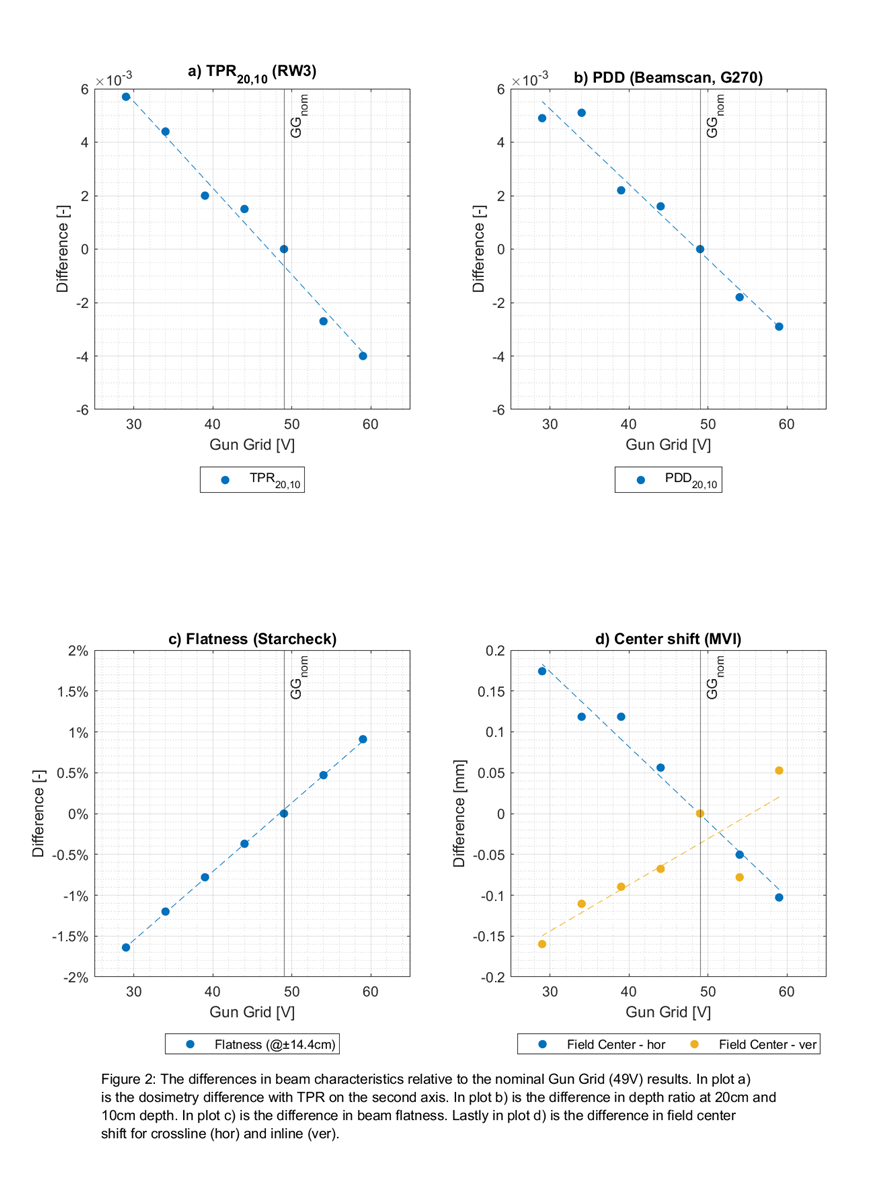Impact of Gun Grid Voltage on beam characteristics for a 1.5T Unity MRLinac
Thomas Foppen,
The Netherlands
PO-1703
Abstract
Impact of Gun Grid Voltage on beam characteristics for a 1.5T Unity MRLinac
Authors: Thomas Foppen1, Simon Woodings1, Wilfred de Vries1, André Wopereis1, Jochem Wolthaus1
1UMC Utrecht, Radiotherapy, Utrecht, The Netherlands
Show Affiliations
Hide Affiliations
Purpose or Objective
A gun grid (GG) can be used in order to adjust the number of electrons that are released from an electron gun into the waveguide. Having a higher anode voltage means that more electrons are released. Changing GG voltage affects the beam energy and output as more electrons means a lower mean energy per electron. Therefore, the energy can be controlled directly when it drifts from the nominal value. The purpose of this research is to quantify the impact of the GG voltage on beam characteristics (energy, profile and center shift) of an Elekta MR-Linac.
Material and Methods
All of the measurements were performed on the same MR-and the GG was changed in steps of 5V with 49V being the nominal value. The effect on beam quality, profile flatness and beam center position were investigated. All measurement values are compared to the nominal GG voltage.
To measure the beam quality, a TPR measurement at 10 and 20 cm depth (10x10cm² field, 100MU) was performed in a RW3 phantom with a PTW waterproof Farmer chamber at the isocenter (SDD 143.5cm). Water was added around the chamber to remove any air bubbles.
Assessing the energy variation in reference conditions, a PDD was measured in a PTW BeamscanMR watertank for a 10x10cm² field. The ratio at 20cm and 10cm water equivalent depth (PDD20,10) was investigated. The measurement were performed with a PTW microDiamond and gantry 270° (due to geometrical limitations).
Changes in energy also affect the beam flatness. Beam profiles of a 36x22cm² field were measured with a PTW Starcheck MaxiMR (Figure 1a). The beam flatness here is defined as the relative difference at 14.4cm off center, i.e. 80% of field width.
The beam center shift was investigated by using a Winston-Lutz (WL) test. A ball bearing was placed in a foam block close to isocenter. Using the onboard MV-imager (MVI), 12 images of a 7.2x7.2cm² field were acquired, one every 30 degrees. A leaf-only field was used to minimalize the diaphragm positional uncertainty.
Results
In Figure 2 the impact on beam characteristics are shown with the differences relative to the nominal GG voltage. All changes in beam performance show a strong linear response (all R²>0.95) except for inline field center shift (R²=0.75).
The TPR20,10 and PDD20,10 values changed consistently with a sensitivity of -0.0015/5V. Also for every 5V the ion chamber reading changed by 1.3% at 10cm depth in RW3. The beam flatness changed by 0.4% every 5V and is visualized in Figure 1a. The changes in field center (horizontal direction) for every gantry angle and GG voltage can be seen as well. It must be noted that there was no change in average BB position.


Conclusion
The effect of the GG voltage change on all presented beam characteristics showed a strong linear response. The observed changes are in agreement with the expected effect of the GG voltage. As a result, no iterative procedure is required and this is a valid method to adjust the beam energy for an Elekta Unity.